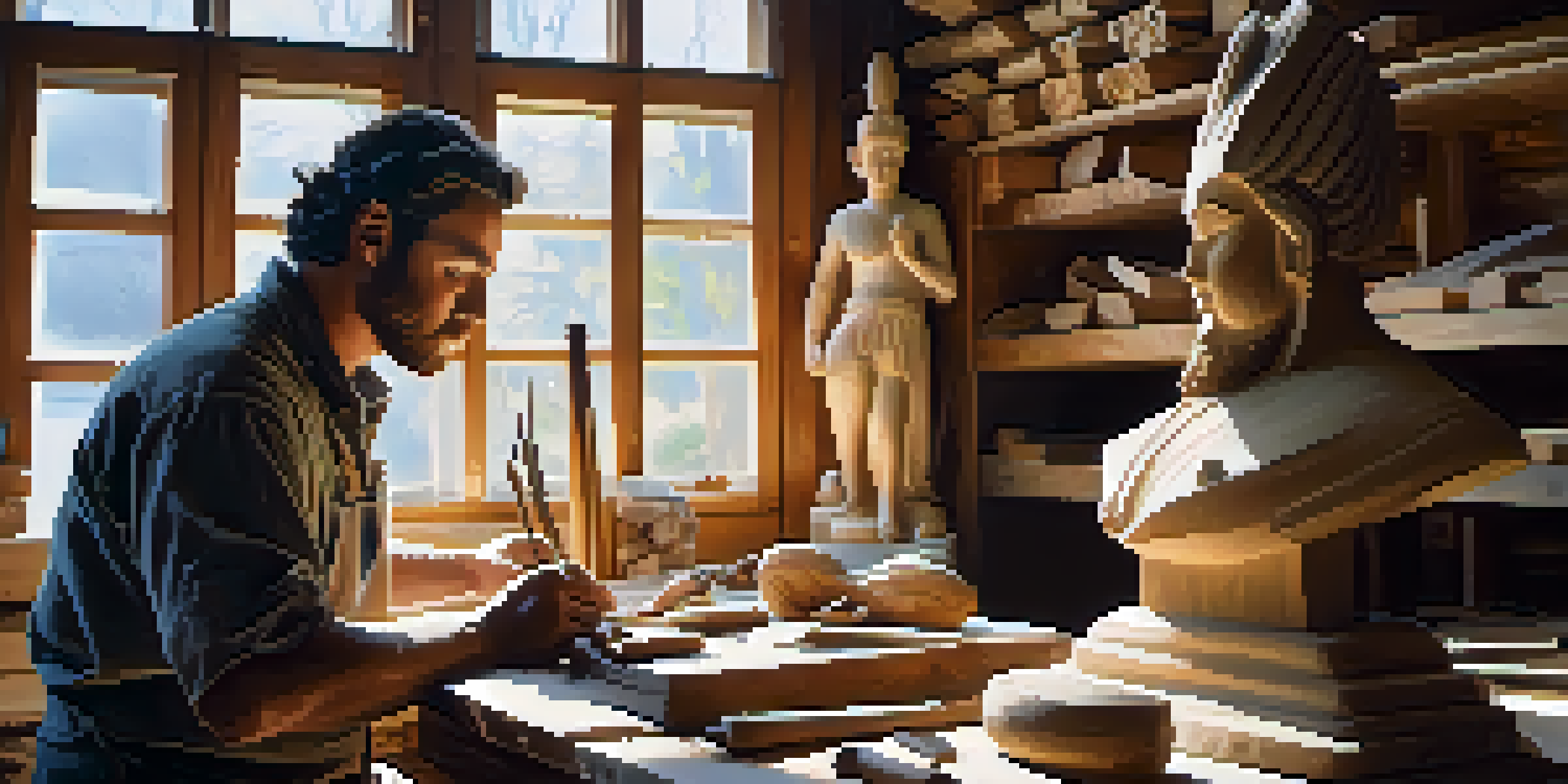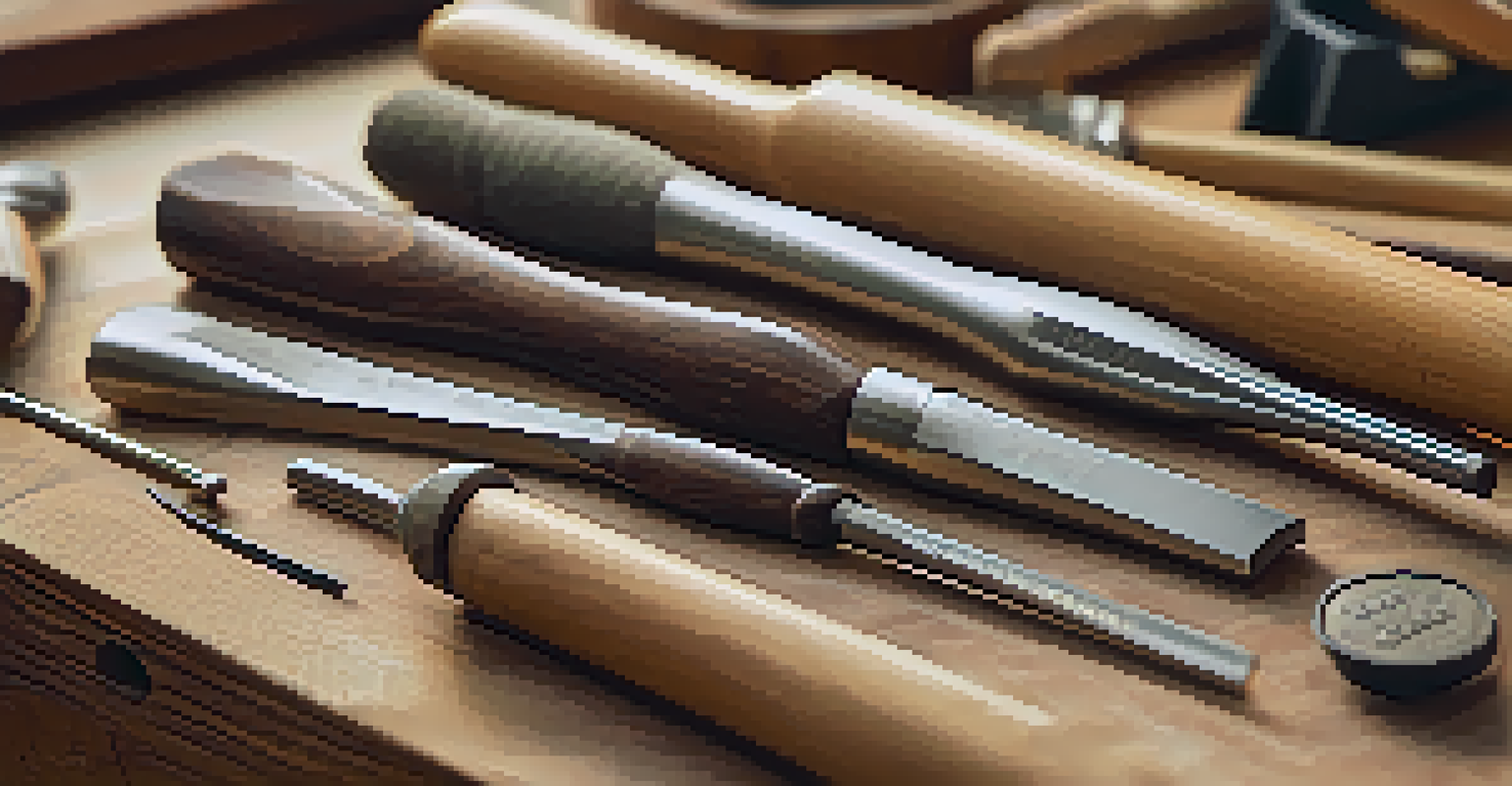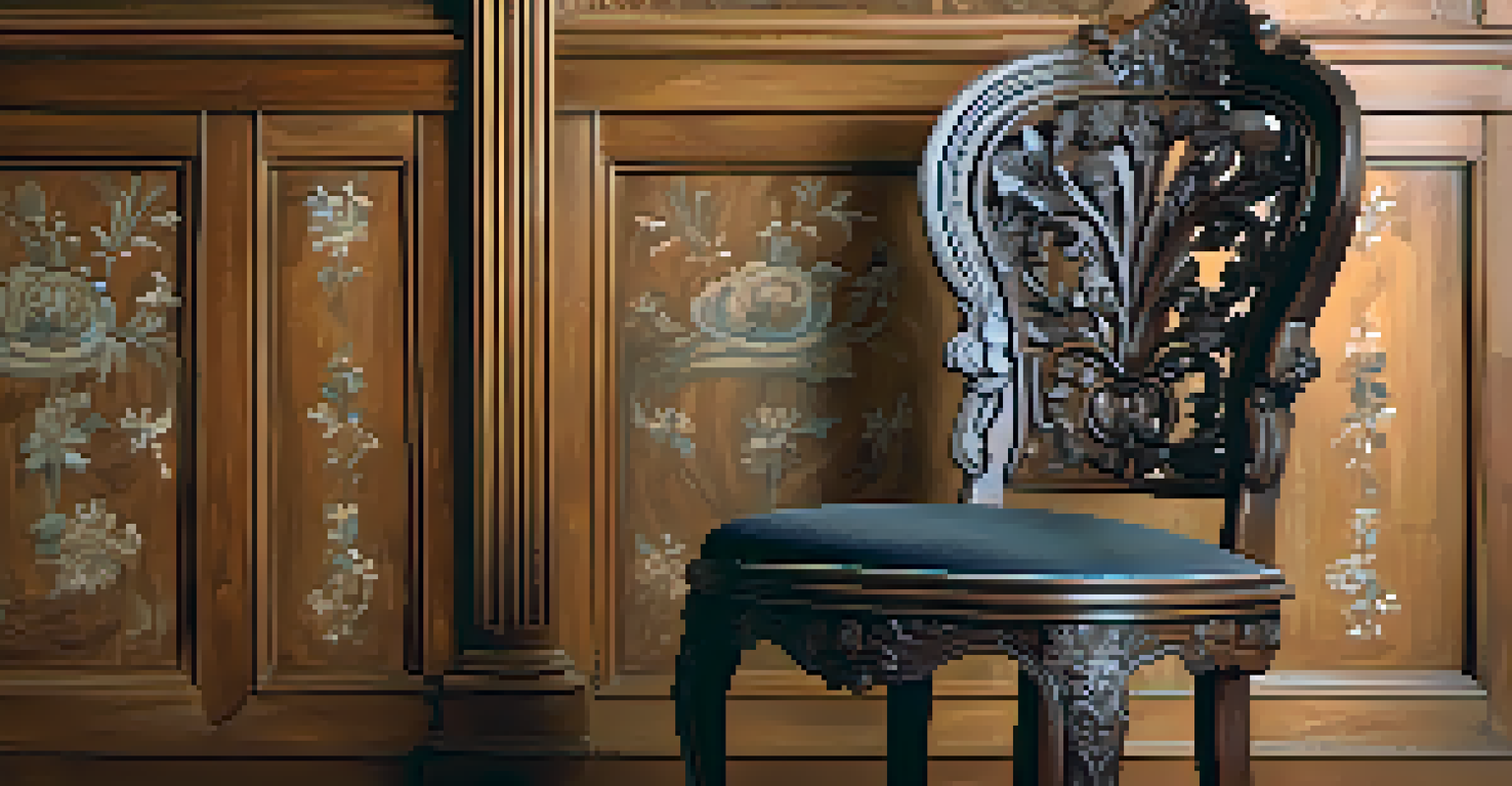Carving in Restoration: Techniques for Authenticity

Understanding the Importance of Authentic Carving
Carving plays a pivotal role in the restoration of historical pieces, ensuring that the integrity of the original design is preserved. It’s not just about fixing what’s broken; it’s about honoring the craftsmanship of the past. When restorers use authentic carving techniques, they breathe new life into worn-out objects while maintaining their historical value.
The past is never dead. It's not even past.
Authenticity in restoration is vital for both aesthetic and financial reasons. Collectors and museums often seek pieces that reflect true craftsmanship, and any deviation can diminish value. This makes the skills of carving not just an art form, but a necessity for anyone serious about restoration.
Moreover, understanding the original techniques can provide insights into the materials and methods used by artisans centuries ago. This knowledge serves as a bridge connecting us to our history, ensuring that the stories behind the objects are preserved for future generations.
Tools of the Trade: Essential Carving Instruments
To achieve authenticity in carving, having the right tools is crucial. Traditional carving tools like chisels, gouges, and knives are essential for detailed work and precision. Each tool has its own unique purpose, allowing artisans to replicate fine details that are characteristic of the original piece.

For example, a set of different gouges can create various textures and curves, closely mimicking the original design. Investing in high-quality tools not only improves the final outcome but also enhances the carving experience. A well-maintained tool can make a world of difference in achieving finesse.
Authenticity Preserves Historical Value
Using authentic carving techniques ensures the historical integrity and craftsmanship of restored objects.
Additionally, modern technology can complement traditional tools. Digital designs and 3D modeling can guide restorers in understanding the dimensions and details of a piece, making it easier to replicate the original carving accurately. Blending old and new techniques can open new avenues for authenticity.
Analyzing Historical Carving Styles
Every era has its distinct carving style, influenced by cultural and artistic movements. For instance, Baroque carvings are known for their elaborate details and dramatic forms, while Arts and Crafts pieces often emphasize simplicity and craftsmanship. Understanding these styles helps restorers make informed decisions in their work.
Preservation of the original is the key to restoration.
When analyzing a piece, consider the era it belongs to and the techniques used during that time. This research can reveal important clues about how to approach the restoration process. For example, a Victorian piece may require a different approach than one from the Colonial period.
By immersing yourself in the history of carving styles, you can better appreciate the nuances that define each period. This knowledge not only enhances your skills but also enriches the storytelling aspect of restoration, making each piece a narrative of its time.
Replicating Techniques: From Observation to Practice
Observation is a key part of learning how to replicate historical carving techniques. This involves studying existing pieces closely, noting the intricacies of the carving. Whether it’s the way the light plays on the surface or the depth of the cuts, careful observation can inform your approach.
Practicing these techniques is the next step. Start with simple projects that allow you to experiment with different tools and methods before tackling more complex pieces. This gradual approach builds confidence and hones your skills, making it easier to replicate authentic styles.
Proper Tools Enhance Carving Precision
Investing in high-quality traditional tools is crucial for achieving detailed and authentic restoration results.
Additionally, workshops and classes can provide hands-on experience and guidance from seasoned restorers. Engaging in a community of fellow artisans fosters learning and inspiration, creating an environment where authenticity thrives.
Material Selection for Authentic Restoration
Choosing the right materials is essential for authentic restoration. Using wood or stone that matches the original piece not only enhances the aesthetic but also ensures longevity. For instance, if restoring a piece made of oak, sourcing high-quality oak will help maintain the integrity of the restoration.
Additionally, understanding the characteristics of different materials can guide your choices. Some woods age beautifully and develop a patina that adds to their charm, while others might not stand the test of time. Researching and selecting materials that align with the original can significantly impact the restoration outcome.
Moreover, consider the sourcing of materials. Using reclaimed or period-appropriate materials can deepen the authenticity of the restoration. This commitment to authenticity reflects a respect for the craftsmanship and history behind each piece.
Finishing Touches: Achieving an Authentic Look
The finishing touches can make or break a restoration project. After carving, applying the right finish is crucial to achieving an authentic look. Techniques like waxing or oiling can enhance the natural beauty of the material while providing protection.
For instance, traditional finishes like shellac or linseed oil can impart a warm glow and depth to the wood, closely resembling the look of the original piece. Experimenting with different finishes can yield various effects, allowing you to find the one that best matches the historical piece.
Ethics Guide Restoration Practices
Transparency and respect for the original context are essential ethical considerations in the restoration process.
Additionally, considering the wear and tear of the original piece can inform your finishing choices. If the original had a distressed appearance, creating a similar effect through aging techniques can enhance authenticity. The goal is to ensure that the restoration feels like a natural continuation of the piece's history.
The Ethical Considerations in Restoration Carving
Restoration carving raises important ethical considerations that every restorer should be aware of. The aim should always be to preserve the original object as much as possible, rather than creating something new that could mislead viewers. This includes documenting any changes made during the restoration process.
Transparency is key in restoration. Future generations should be able to understand what has been altered and why. This practice not only maintains the integrity of the piece but also fosters trust among collectors and institutions.

Furthermore, consider the cultural significance of the items being restored. Respecting the original context and meaning behind an object is crucial in maintaining its authenticity. Engaging with communities and experts can provide valuable perspectives on how to handle culturally sensitive artifacts.